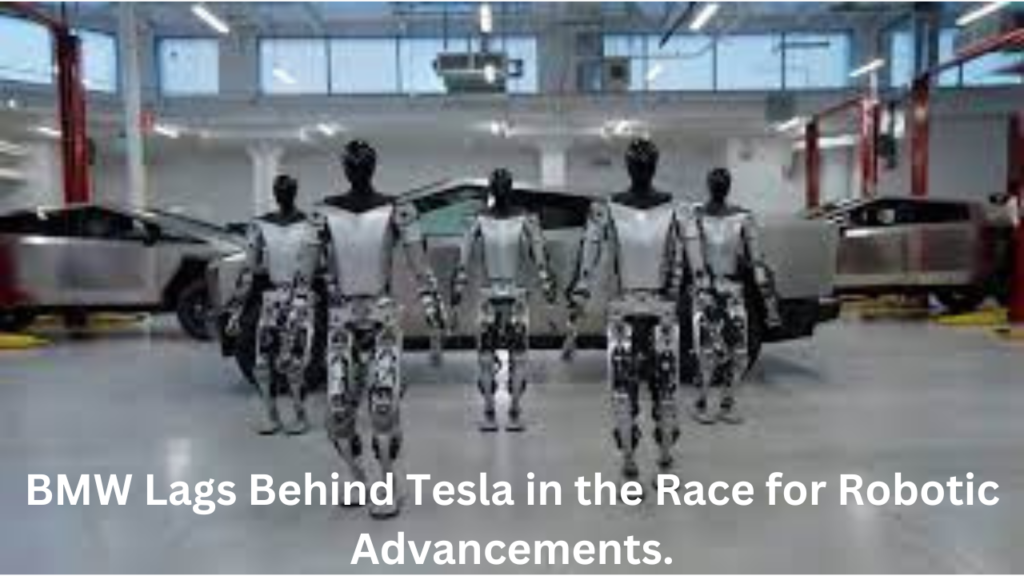Discover the impact of BMW’s introduction of humanoid robots at its South Carolina factory. Delve into the roles these droids will play and explore whether they pose a threat to human jobs in this comprehensive deep dive.
BMW Secures Deal to Integrate Humanoid Robots into U.S. Factory Operations
In a groundbreaking move, BMW has recently finalized a contract to introduce a squad of 5-foot-6, 130-pound humanoid robots at its automotive production plant in Spartanburg, South Carolina. Developed by the robotics startup Figure, these innovative droids boast two arms, two legs, and a torso akin to a human, enabling them to navigate the factory floor with the potential capability to execute physical tasks using their limbs.
What are the Capabilities of This Humanoid Robot?

The Figure 01 bot operates on a rechargeable battery, needing replenishment every 5 hours. With its pair of agile arms, equipped with sensors, it can effortlessly lift objects weighing up to 45 pounds. Propelled by two legs, it can traverse at speeds up to 2.7 mph, providing a mobility advantage over traditional stationary industrial robots.
The company asserts that the droid’s artificial intelligence enables it to tackle “difficult, unsafe, or tedious tasks,” although specific roles on BMW’s assembly lines remain undisclosed. One potential application is speculated to be assisting workers in handling heavy objects that require dual-handed gripping.
Will These Humanoid Robots Take Auto Workers’ Jobs?
On paper, these agile robots could significantly reduce BMW’s reliance on human workers for certain manual jobs in the plant. The launch comes after factory staffers negotiated a new deal for 25% higher wages over 4 years. With rising labor costs eating into their bottom line, BMW may view these tireless robot workers as a way to improve productivity and cut expenses.However, BMW maintains that the technology will “enable the automation of dull, dirty and dangerous work” while allowing human employees to focus on more high-value tasks. The carmaker says its priority is using innovation to boost efficiency – not to replace its workforce.
BMW Lags Behind Tesla in the Race for Robotic Advancements.

In the race to integrate humanoid robots into factory operations, BMW is facing fierce competition, particularly from Tesla. In 2019, Tesla CEO Elon Musk unveiled a prototype named Optimus for the Tesla Bot, suggesting its potential to surpass the value of Tesla’s electric vehicle (EV) models.
While BMW’s collaboration with Figure represents progress, both automakers are still behind Tesla, which is actively advancing in-house humanoid robot development. Reports indicate that Tesla’s Optimus bot can execute fundamental tasks such as squatting and delicately handling objects like eggs. In contrast, BMW has not showcased similarly specific use cases for its humanoid robots at this stage.
What Fuels Automakers' Enthusiasm for Humanoid Robots?
Automakers seem convinced human mimic bots represent the future of advanced manufacturing automation. The theory is that by approximating a human’s flexibility, mobility and dexterity, they can handle far more diverse tasks around volatile factory environments. Single-purpose robots lack these generalist capabilities required for the next wave of intelligent process automation.
Beyond production efficiencies and cost savings, some experts believe mastering cutting-edge humanoids now will pave the way for consumer robotics markets down the line. For tech-firms like Tesla, building real-world know-how today could position them to sell useful bots directly to retail customers tomorrow.
When Will BMW’s Robo-Workers Arrive at the South Carolina Plant?
BMW and Figure are presently identifying specific applications for the robots on the shop floor. Figure anticipates its first batch of droids will report for duty at the Spartanburg facility sometime in 2024 if all goes to plan.
For now, the carmaker is keeping its cards close to its chest, only noting that it sees humanoids as a “tool in our toolbox” for next-gen manufacturing. It remains to be seen if these prototypes live up to futuristic hype as the solution for greasing wheels in BMW’s US production ecosystem.
Conclusion :
Navigating the Nexus: Humanoid Robots in Auto Manufacturing
As automation and artificial intelligence make strides in the manufacturing sector, the widespread displacement of human jobs remains a premature prediction. The synergy between thinking, moving robots like Figure’s droids and human workers on shop floors will determine their success in the real world – a complementary collaboration rather than a competitive clash.
BMW’s foray into humanoid helpers in South Carolina in 2024 serves as a litmus test. The experiment aims to gauge whether these robots can enhance production without diminishing the irreplaceable qualities of human oversight, judgment, and creativity, potentially ushering in a new era of collaboration.
The ideal scenario envisions these humanoid robots multiplying the throughput of a team through seamless collaboration, rather than replacing human roles. However, challenges persist as not all tasks in auto manufacturing may be suited to automation, especially those requiring contextual judgment, improvisation skills, emotional intelligence, ethical decision-making, and relentless drive – aspects that are inherently human.
Workers, upon hearing about BMW’s partnership with Figure, express valid concerns about long-term job security. The way BMW positions these mechanical human imitators – whether as assistants or full-on replacements – will set the tone for the future. If deployed strategically, Figure’s robots in Spartanburg could pioneer a promising symbiotic relationship between man and machine in car manufacturing. However, mishandling the integration risks alienating the invaluable human talent essential for BMW’s production success in the decades ahead.





